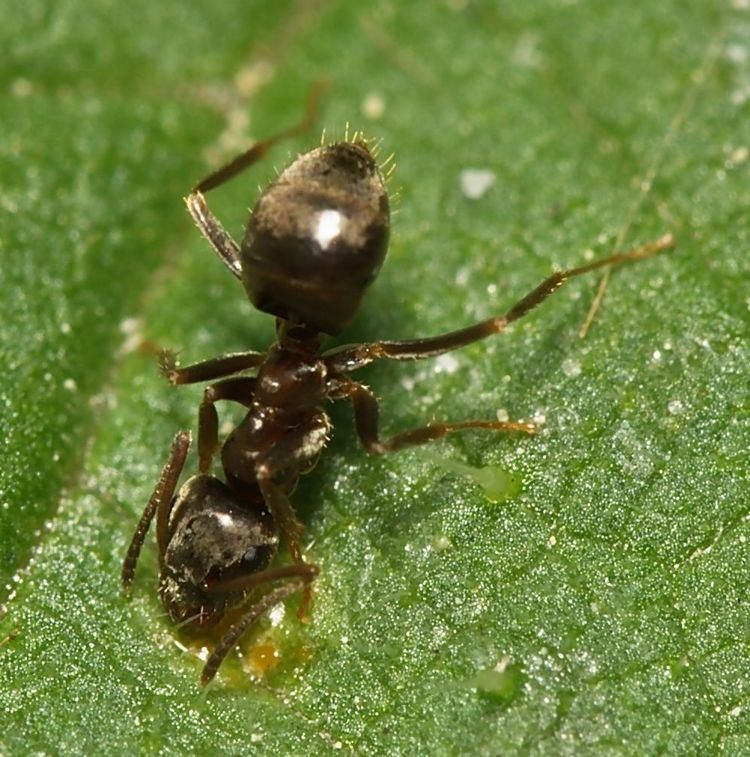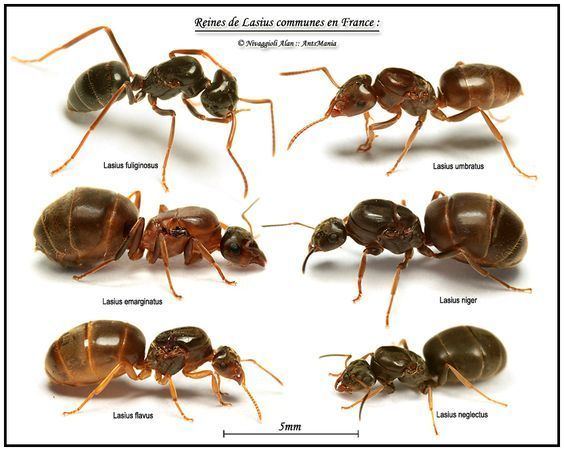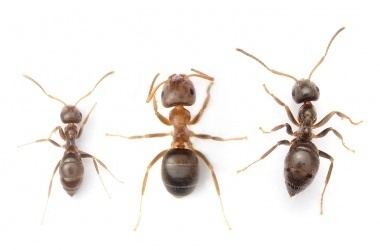Superfamily Vespoidea Scientific name Lasius Order Hymenopterans | Suborder Apocrita Tribe Lasiini Higher classification Formicinae Rank Genus | |
 | ||
Lifespan Black garden ant: 15 years Lower classifications Black garden ant, Yellow meadow ant, Lasius fuliginosus, Lasius emarginatus, Lasius umbratus | ||
Lasius niger queens
Lasius is a genus of formicine ants. The type species for this genus is the black garden ant, Lasius niger. Other major members, which live in drier heathland, are the cornfield ant, L. neoniger, and L. alienus. Other species include the temporary social parasites of the L. mixtus group and the hyper-social parasite Lasius fuliginosus. Lasius flavus is also a commonly seen species, building grassy hillocks in undisturbed pasture. In the Alps, these mounds - always aligned east to catch the first rays of the rising sun - have been traditionally used by goatherds as natural compasses.
Contents

My black garden ant colony lasius niger
Moisture ants

Many Lasius species, known collectively as "moisture ants" in the United States, make their nests in and around moist rotting wood as well as under rocks. They can infest buildings, particularly foundation forms in contact with soil, becoming a minor nuisance. They are not considered a structural threat because they only make their galleries in wood that is already decayed. Some species build "cartonlike" nests in moist locations made of decayed wood fragments cemented together with honeydew and the ant's mandibular gland secretions. Workers are monomorphic, 2 to 3 mm long, yellow to dark brown. They are secretive, and forage mostly at night for honeydew and other sweet substances, and may also prey on small insects. Winged reproductive males and females swarm in late summer and fall, which is when building infestations may be noticed. They are distinguished from carpenter ants (Camponotus), another structure-infesting species, by being much smaller, and having a notch in the dorsal thorax (top of the center body division), where carpenter ants have a rounded thorax. Widespread moisture ant species include L. alienus and L. neoniger, as well as some Acanthomyops species.


